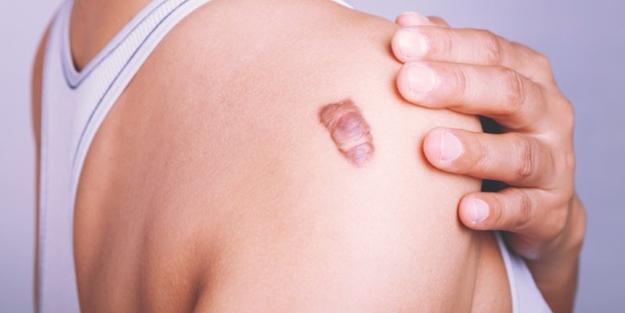- 0 332 350 37 67
- bilgi@ezgiulu.com.tr
Keloid Skar

Keloid Skar
It is a condition characterized by the development of excessive scars that occur on the skin, especially in the upper parts of the body, as a result of the uncontrolled response to wound healing, affecting people negatively in functional and cosmetic terms, and may be slightly raised, pink, red or skin-coloured. It may disappear on its own.
Creams, injection into keloid, cryotherapy and laser treatments are applied in the treatment. Direct surgical removal of scar tissue is not appropriate; surgery may result in further growth of the initial scar tissue.
Surgical Removal
Excision of keloids alone is not a successful treatment method. Recurrence rates of lesions after surgery vary between 45% and 100%. Surgery is often used in combination with other treatment methods. Such as cortisone application before surgery, PDL laser application after surgery or application of imiquimod cream to the post-surgical area. Such combined treatments are extremely effective, especially in pedunculated keloidal structures.
Injection of Cortisone (Triamcinolone) into Diseased Tissue
One of the most frequently used methods in the treatment of keloid and hypertrophic scars is intralesional steroid application, as they are easily applicable and obtainable, are well tolerated by the patient, and are successful in reducing symptoms. Although cortisone such as dexamethasone, hydrocortisone acetate and methyl prednisolone are used for this purpose, the frequently used one is triamcinolone acetonide. In the application area, it suppresses collagen synthesis and inhibits fibroblast activity. Depending on the surface area of the keloid 1-2 cm2: 20-40 mg; 2-6 cm2: 40-80 mg; 6-12 cm2: 80-120 mg is applied.

